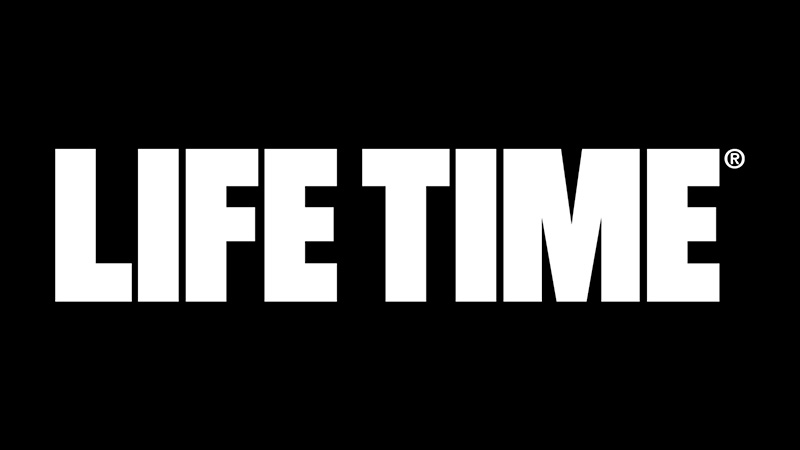
Mastering Fitness SEO: Your Path to Online Success
Welcome to the ultimate guide on conquering the digital realm for your gym or fitness business! In today’s fast-paced world, having a strong online presence is paramount for attracting new clients, engaging with your community, and staying ahead in the competitive fitness industry. This comprehensive article is your go-to resource, filled with expert insights and actionable strategies to optimize your website, dominate search engine rankings, and master social media platforms. From understanding the intricacies of gym SEO to harnessing the power of social media for your advantage, we’ve got you covered. So, let’s dive in and unlock the secrets to building an influential online presence that will skyrocket your gym’s success and attract a flood of fitness enthusiasts to your doors!
Understanding Fitness SEO
In today’s digital landscape, having a strong online presence is crucial for gyms and fitness businesses. To achieve better visibility on search engines like Google, it’s essential to understand and implement effective Gym SEO strategies. This section will delve into the key components of SEO for fitness brands and provide insights on how to optimize your website for better search rankings.
Keyword Research for Gym Websites
Keyword research forms the foundation of any successful SEO campaign. By identifying the right keywords, gyms can attract their target audience and drive relevant traffic to their websites. Here are two crucial steps in conducting keyword research for the fitness industry:
Identifying Relevant Keywords for the Fitness Industry
Begin by brainstorming a list of keywords that are relevant to your gym or fitness business. Think about the services you offer, the classes you conduct, and the specific fitness goals you cater to. For instance, keywords like “fitness classes near me,” “personal training,” “weight loss programs,” and “strength training” can be relevant for a gym.
To expand your keyword list, use keyword research tools like Google Keyword Planner, SEMrush, or Ahrefs. These tools will provide insights into the search volume, competition, and related keywords, helping you discover additional relevant terms to target.
Utilizing Long-tail Keywords for Targeted Traffic
While short, generic keywords are highly competitive, long-tail keywords offer an opportunity to target a more specific audience. Long-tail keywords are longer phrases that users often use when conducting detailed searches. For instance, “best yoga classes in [your city],” “affordable CrossFit gym in [your area],” or “fitness tips for beginners” are examples of long-tail keywords.
Optimizing your content with long-tail keywords can attract highly targeted traffic, increasing the chances of converting visitors into leads or clients.
On-Page Optimization for Gym Websites
On-page optimization involves optimizing various elements on your website to make it more search engine-friendly. By paying attention to these key on-page factors, you can improve your website’s visibility in search results.
Optimizing Title Tags and Meta Descriptions
Title tags and meta descriptions are HTML elements that provide concise information about a web page’s content. Search engines use these elements to understand what a page is about and display them in search results. Include your target keywords in the title tag and craft a compelling meta description that entices users to click through to your website.
Creating Engaging and Keyword-Rich Content
High-quality, relevant content is vital for Gym SEO. Create informative and engaging content that revolves around fitness topics, workout routines, nutrition advice, and industry trends. Incorporate your target keywords naturally within the content to improve its relevancy and keyword optimization.
Ensure that your content is valuable to your target audience and answers their fitness-related queries, as this will encourage users to stay on your site longer and reduce bounce rates – a positive signal for search engines.
Image Optimization for Better User Experience
Images play a crucial role in gym websites to showcase facilities, trainers, and fitness equipment. Optimize your images by compressing them to reduce page loading times without compromising quality. Use descriptive alt tags for images, as search engines cannot “see” images but rely on alt tags to understand their content.
Technical SEO for Fitness Platforms
In addition to on-page optimization, technical SEO is essential for ensuring that your gym website functions well and is easily accessible to both users and search engine crawlers.
Ensuring Mobile Responsiveness
With the increasing number of users accessing the internet through mobile devices, having a mobile-responsive website is a must. Mobile responsiveness means that your website adapts to different screen sizes and devices, providing a seamless user experience. Google considers mobile-friendliness as a ranking factor, so optimizing for mobile can positively impact your search rankings.
Improving Page Loading Speed
Page loading speed is a critical factor in user experience and SEO. A slow-loading website can lead to higher bounce rates, resulting in a negative impact on search rankings. Use tools like Google PageSpeed Insights or GTmetrix to identify areas of improvement and optimize your website’s loading speed.
Implementing SSL Certificate for Website Security
Website security is crucial for both user trust and search engine rankings. Implementing an SSL certificate on your gym website ensures that data transmitted between users and your website is encrypted and secure. Websites with SSL certificates are indicated by “https” in the URL, and Google gives preference to secure sites in search results.
By understanding and implementing these crucial aspects of Gym SEO, your website can gain a competitive edge in the fitness industry and attract more organic traffic from potential clients seeking fitness-related information and services.
SEO Strategies to Attract More Clients
To thrive in the competitive fitness industry and attract more clients to your gym, implementing effective SEO strategies is essential. By optimizing your online presence, you can reach a broader audience and convert potential leads into loyal customers. This section will explore three key SEO strategies tailored to the fitness industry to help your gym stand out and attract more clients.
Local SEO for Gyms
Local SEO is a powerful strategy to connect with potential clients in your area. By targeting local searchers, you can increase foot traffic and boost gym membership sign-ups. Here are three key components of local SEO for gyms:
Setting up Google My Business Page
Create and optimize your gym’s Google My Business (GMB) page. Ensure that all relevant information, such as your gym’s name, address, phone number, and business hours, are accurate and up-to-date. Adding high-quality images of your gym and facilities can further enhance your GMB listing and entice potential clients.
NAP Consistency Across Online Directories
NAP stands for Name, Address, and Phone Number. Consistency in your gym’s NAP information across various online directories, such as Yelp, Yellow Pages, and local business directories, is crucial for local SEO. Search engines rely on consistent NAP data to establish trust and credibility for your gym’s local listings.
Encouraging Customer Reviews and Testimonials
Positive customer reviews and testimonials can significantly impact potential clients’ decision-making process. Encourage satisfied gym members to leave reviews on your GMB page and other relevant platforms. Engage with customers’ feedback, address any concerns, and showcase the positive experiences of your gym’s clientele.
Link Building for Fitness Websites
Link building is a fundamental SEO strategy that involves acquiring backlinks from reputable websites. Backlinks act as “votes of confidence” for your gym’s website, signaling to search engines that your content is valuable and trustworthy. Here are two effective link-building techniques for fitness websites:
Building Relationships with Fitness Bloggers and Influencers
Reach out to fitness bloggers, influencers, and industry leaders who have authority in the fitness niche. Collaborate with them on guest blog posts, joint promotions, or social media campaigns. When they link back to your gym’s website, it enhances your site’s credibility and visibility in search results.
Submitting Gym Listings to Local Directories
Submit your gym’s information to relevant local directories, chambers of commerce, and fitness associations. These local citations not only improve your gym’s visibility in local searches but also contribute to your link-building efforts. Ensure that your NAP information remains consistent across these directories.
Content Marketing for Fitness Businesses
Content marketing is a powerful tool for establishing your gym as an authoritative source in the fitness industry. By creating valuable and engaging content, you can attract and retain potential clients. Here are three content marketing strategies for fitness businesses:
Creating Informative Blog Posts and Articles
Produce high-quality blog posts and articles that address common fitness questions, provide workout tips, and share expert advice. Use keyword research to identify relevant topics and incorporate targeted keywords naturally into your content. Valuable blog posts can attract organic traffic and position your gym as a go-to resource.
Designing Engaging Infographics and Visual Content
Visual content, such as infographics, workout guides, and nutrition charts, can capture users’ attention and make complex information more digestible. Share these visually appealing assets on your website and social media platforms. Infographics and visual content are highly shareable, increasing your content’s reach and potential for backlinks.
Publishing Video Content to Showcase Gym Facilities
Video content is an excellent way to showcase your gym’s facilities, trainers, and workout classes. Create engaging workout videos, trainer interviews, and virtual gym tours. Video content not only appeals to users but also has a positive impact on search rankings, as search engines increasingly prioritize multimedia content.
By implementing these targeted SEO strategies, your gym can enhance its online visibility, attract more clients, and establish a strong reputation in the fitness industry.
Optimizing Social Media for Gym and Fitness Businesses
In today’s digital age, social media has become a powerful platform for gym and fitness businesses to connect with their target audience, build brand awareness, and drive engagement. Optimizing your social media presence is essential to maximize its impact on your gym’s online visibility and attract potential clients. Here are key strategies to optimize your social media for success:
Choose the Right Social Media Platforms
Not all social media platforms are created equal, and each has its unique audience and strengths. Focus on the platforms that align with your gym’s target audience and business objectives. Facebook, Instagram, and Twitter are popular choices for fitness businesses due to their wide user bases and visual content appeal.
- Facebook: Create a Facebook business page to showcase your gym’s services, facilities, and class schedules. Use it to share blog posts, fitness tips, and success stories. Engage with your followers through comments, messages, and live videos.
- Instagram: Leverage Instagram’s visual nature to share eye-catching photos and videos of workouts, trainers, and inspiring fitness transformations. Utilize Instagram Stories and IGTV for behind-the-scenes glimpses and longer-form content.
- TikTok: Utilize TikTok’s short-form video format to create fun and engaging fitness-related content. Showcase quick workout routines, fitness challenges, and motivational clips. Use trending hashtags and popular sounds to increase your gym’s visibility and reach a younger, energetic audience.
Consistent Branding and Messaging
Maintaining consistent branding and messaging across all social media platforms is crucial for building brand recognition and trust. Use your gym’s logo, colors, and brand elements in profile pictures, cover photos, and post designs. Ensure that your tone of voice aligns with your gym’s personality and values.
Engage and Interact with Your Audience
Social media is a two-way street. Engage with your audience by responding to comments, messages, and mentions promptly. Encourage discussions, ask questions, and seek feedback to foster a sense of community. Responding to both positive and negative feedback in a professional and empathetic manner shows that you value your clients’ opinions and are committed to their satisfaction.
Visual Content and Multimedia
Visual content is highly engaging and shareable. Utilize high-quality images and videos to showcase your gym’s facilities, classes, and trainers. Share before-and-after transformation photos and client success stories to highlight the positive impact of your services. Consider creating short workout videos, exercise tutorials, and nutrition tips to provide value to your followers.
Utilize Hashtags Strategically
Hashtags help increase the discoverability of your posts and connect your content with relevant topics and trends. Research and use fitness-related hashtags that are popular in your niche and location. Additionally, create branded hashtags unique to your gym to encourage user-generated content and community engagement.
Analyze Performance and Refine Strategies
Regularly analyze the performance of your social media efforts using platform analytics and social media management tools. Track metrics like reach, engagement, follower growth, and link clicks. Use these insights to refine your social media strategies, identify successful content types, and optimize posting schedules.
By optimizing your gym’s social media presence with these strategies, you can effectively connect with your audience, build brand loyalty, and attract more clients to your fitness business.
Photofy: Enhancing Your Gym’s Social Media Presence
Photofy is a powerful tool that can significantly enhance your gym’s social media presence. With its user-friendly interface and a wide range of customizable templates, Photofy allows you to create visually stunning and engaging content for your social media platforms. Whether you need to design eye-catching workout graphics, share client success stories, or promote upcoming fitness events, Photofy has you covered. Its extensive library of fitness-related images and graphics makes it easy to stay on brand and convey your gym’s unique personality. By utilizing Photofy, you can elevate your social media game, attract more followers, and ultimately, attract more potential clients to your gym.
Photofy has established partnerships with these renowned brands. Click on the logos to begin your Photofy plan or explore our enterprise solutions tailored to elevate your fitness brand.
Next Steps: Optimize Your Fitness Website and Profiles
In conclusion, mastering the art of digital presence is the key to thriving in the ever-evolving fitness landscape. By implementing the SEO strategies outlined in this guide, your gym can climb the ranks of search engine results and outshine competitors. Leveraging the potential of social media platforms will enable you to forge meaningful connections with your audience, fostering a strong sense of community and brand loyalty. Moreover, with the help of Photofy’s powerful tools, you can create captivating visual content that leaves a lasting impression on your followers. As you embark on this journey to conquer the digital realm, remember that consistency, authenticity, and engaging content are the cornerstones of a successful online presence. Embrace the tips and techniques discussed here, and watch as your gym becomes a leading force in the fitness industry, attracting legions of dedicated clients and establishing a lasting legacy of health and wellness. The digital world is your stage; let your gym’s brilliance shine brightly for all to see!
Frequently asked questions
What is SEO in fitness?
SEO, or Search Engine Optimization, in the fitness industry refers to the process of optimizing a gym or fitness business's online presence to improve its visibility in search engine results. By using relevant keywords, creating valuable content, and optimizing technical aspects, SEO helps attract organic traffic and potential clients to fitness websites.
How to implement SEO for gym business?
To implement SEO for a gym business, start by conducting keyword research to identify relevant terms related to fitness services and offerings. Optimize the gym's website with these keywords in title tags, meta descriptions, and content. Focus on creating high-quality, informative content, and ensure the website is mobile-responsive and user-friendly for better search rankings.
What are the best keywords for fitness?
The best keywords for fitness businesses depend on their specific niche and target audience. Popular fitness-related keywords may include "gym near me," "personal training," "fitness classes," "nutrition tips," "workout routines," and "weight loss programs." Conducting keyword research can help discover relevant and valuable keywords.
How can fitness businesses perform effective keyword research?
Fitness businesses can perform effective keyword research by using online tools like Google Keyword Planner, SEMrush, or Ahrefs. Identify relevant fitness-related terms and their search volumes to understand what potential clients are searching for. Focus on a mix of high-volume and long-tail keywords to target both broader and more specific queries.
What are the keywords for gym and fitness?
Keywords for gym and fitness businesses may include "gym SEO," "fitness SEO," "SEO for fitness," "best gym in [location]," "workout classes," "health and wellness," "fitness tips," "nutrition advice," and "personal training services." Tailor the keywords to match the gym's offerings and target audience.
What role does social media play in boosting SEO for fitness platforms?
Social media plays a significant role in boosting SEO for fitness platforms. Engaging social media activity, sharing valuable content, and building a strong online community can lead to increased brand visibility, website traffic, and user engagement. Positive social signals can indirectly impact search rankings by indicating to search engines that the website is relevant and valuable to users.








